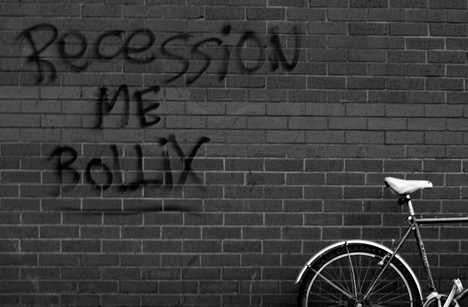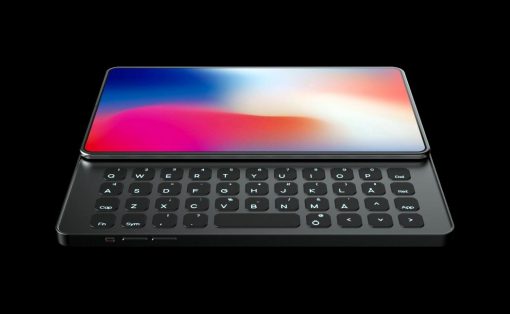It is all around us, talk of Doom, gloom, job cuts, job losses and recession etc. This is not what a young designer, fresh out of school, wants to hear. It is also not what an employed designer wants to hear. However it is not the end of the road, and as long as the Earth keeps turning, there will be a tomorrow. Personally, I like to believe a recession is a time of great opportunity for everyone. Particularly for forward looking designers who have the right skills and are well placed to take advantage of a recovering economy.
But first let me share a little about myself. I first got out of design school; it was at the height of the Asian Economic Crisis in 1997. There were hardly any industrial design jobs available. I was retrenched from my first furniture design job after 3 months, and it took me another 4 months before I found a design related job. It was not easy. However I remained focused throughout and kept learning every step of the way. If you are interested, I compiled some of my lessons in this post on my blog, but I think it is the right time to expand and update these tips as, today’s economic situation is not only about getting a job, it is also about keeping it.

1) Be Flexible
In a time of recession, you need to be flexible. Not only should you do your best to chase down any design related job you can find, you should also be ready to be the one to do the “dirty” work. The tough jobs that no one else wants to do. In this time of crisis, employers look for people who are willing to do what it takes to deliver.
2) Can you sell Ice to an Eskimo?
The ability to sell yourself in interviews and all documents related to you is vital in winning in today’s job market. It is not only about getting your information out to people; it is about positioning yourself in the best possible light. Leverage on your achievements and strengths, but in a Design world filled with egos, soft sell goes a lot further than hard sell.
3) Know Thyself
Before you can sell yourself you need to know your strengths and weaknesses. Time for some navel gazing and be very self-critical. Play up your strengths and look to improve your weaknesses.
4) Where You want to go Today?
Have a strong vision of where you want to go or what you want to achieve as a designer. It’s important to employers as it shows vision, passion and ambition. A strong personal vision also helps you make the right decisions when you need to deliberate on job opportunities.
5) Continue to Improve
You can always look to do a task better or improve a skill. Striving to do things better, is an important mindset to have.
6) Lifelong Learning
Not only look to improve, but aim to learn new things. One new thing a week is a good start. Industrial Design is a huge profession with many facets of which you only learn the basics in school. Once you are out of school, take it upon yourself to lean more by being proactive.
7) Take Risks
A young designer, fresh out of school CAN and should take risks in their career. Of course you need to be prudent if you have to put food on the table. However it is not the time to pick the “safe” job, but the time to pick the job that gives you the best exposure.
8 ) Personal Branding
No, it is not the personal logo or monogram that makes most people cringe. It is about an image you want to present, a public “face” that represent the principles you stand for. A well written blog is a very powerful tool for Personal Branding.
9) Passion
I have to say that employers HATE designers with little or no passion for their work. Nobody can be more excited about your design work or career but you. Passion is also about doing what it takes to get things done. Employers like that. This should also be demonstrated when you talk about your portfolio.
10) Build Relationship and Communication Skills
When I got out of school, it was in the time when 3D CAD started becoming big and every employer wanted a 3D designer. Unfortunately my hand rendered portfolio could never compete, but it did not matter, my eagerness to learn 3D CAD, and my ability to communicate that design was innate and not reliant on a 3D tool was what won the day.
11) Be Serious with Your Job
Young designers are just that, young. They focus on a quality life more than quality work. Some just don’t take their work seriously. Good Design is serious business, this means quality work delivered on time and on budget.
12) Work Like a Slave
To get good in design fast, you need to clock the hours to acquire the skills. Work hard, when you are young, but also work smart. In interviews, show that you are willing to put in what it takes to get things done. Quality projects with short lead times are worth its weight in gold in portfolios.
13) Always Shine with Good Work
Always, I say ALWAYS focus on good quality work. When in doubt, awesome designs will always make anyone’s day.
14) HOMEWORK!
Be diligent, before you go for an interview, do your homework. No employer likes people who know nothing about the company or the work they do.
15) Network
Online AND offline. Enough said, don’t you think?
16) Polish your Portfolio, Again and Again
Portfolios are a historical document of you and your work. Make sure it is updated and presented in the best possible light. When I first started out, I updated or re-designed my portfolio every 3 to 6 months. Your Portfolio should become a living document that reflects your goals and vision. If you went back to a company for a repeat interview they would have new things to see and a good idea how you are developing as a designer.
17) Get Real Projects Fast
Student work is great to start your portfolio out with; however do aim to phase it out of your portfolio as quickly as you can with real design work. Real world projects give you the creditability you need. If you are stuck in a job that has very little design work worthy of your portfolio, try to get some extra freelance or temporary work to shore up your portfolio.
18) Deck out your CV with Results not Skills
In your CV you would probably have indicated that you are a “team player”, or “great at creating 3D models” etc. Well, so can millions of other designers. Make sure instead that in every past or present job listing in your CV you describe your contribution to the bottom line. So instead you should write that you “worked in global team that spanned 5 countries” or “you were responsible for the 3D database generation for this award winning product.”
19) Widen your Interests
The most effective designers can draw inspiration from their have very varied interests, that are often no design related. Share some of that during an interview or with your colleagues, it makes you a much more interesting person.
20) Be a Problem Solver
Last but not least, nobody likes a “Whiner”, and I can vouch that most employers don’t. You supposed to be a creative, so be creative and figure how to make the best of your limited budget or your reduction in man power. In a recession there is no shortage of work, just the resources to do it.
———-
Well, there we go! I hope these 20 tips will get you up and going as a designer, or perhaps even solidify your position as one. Please do not hesitate to leave a comment or additional questions you may have or need feedback for.
Brian is a multidisciplinary industrial design leader that goes under the pseudonym of “The Design Translator”. He muses about the art of design leadership and the business of strategic industrial design over at his website Design Sojourn. He often laments the lack of good soy mochas and Italian pizzas (with Rocket and shredded Parma ham) in Asia.





